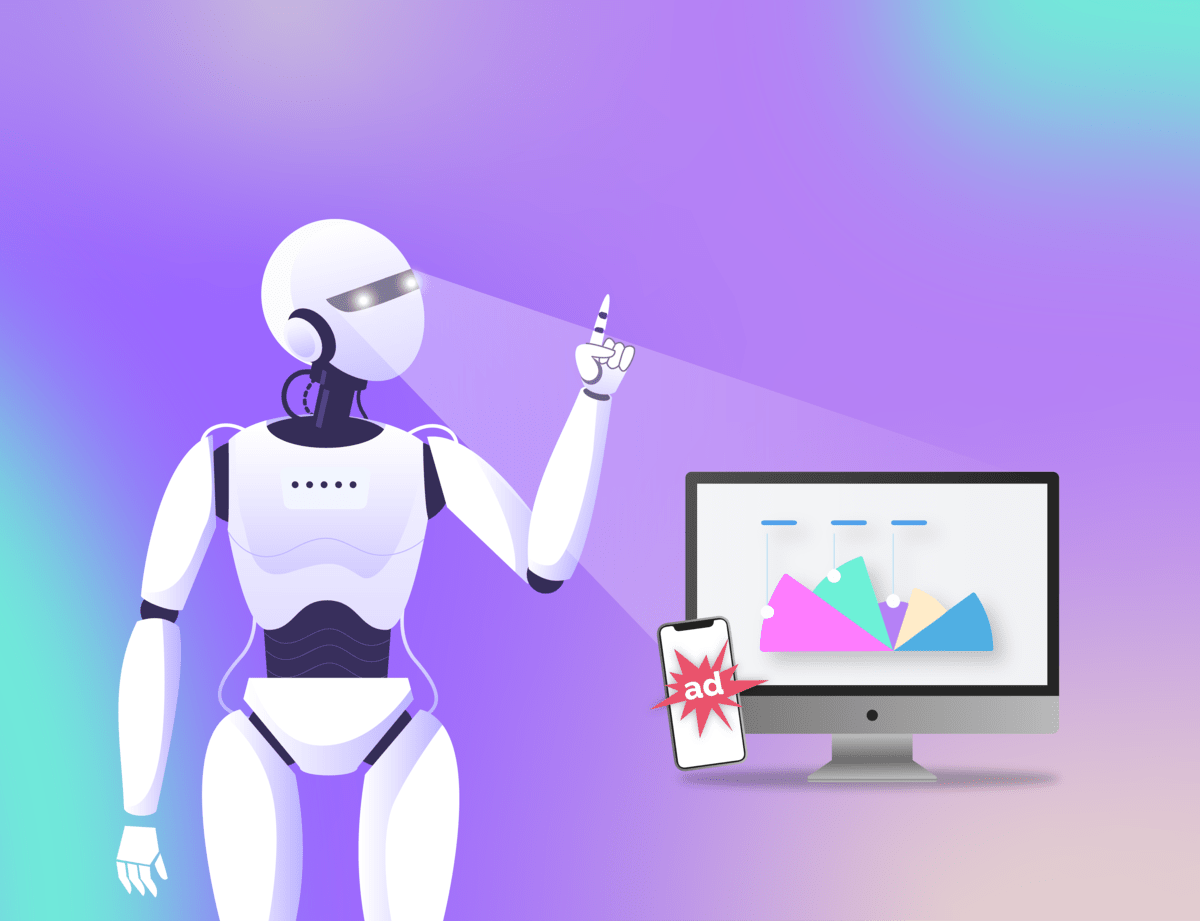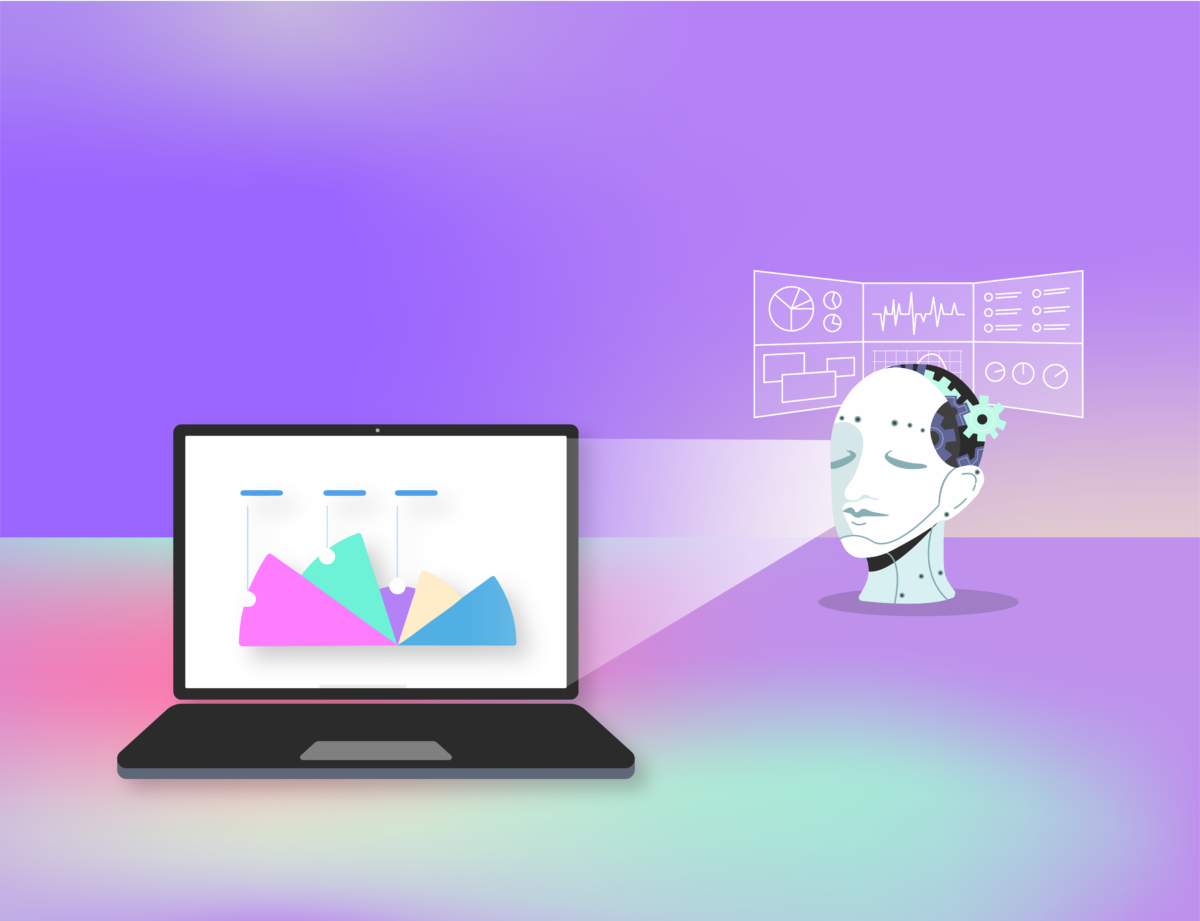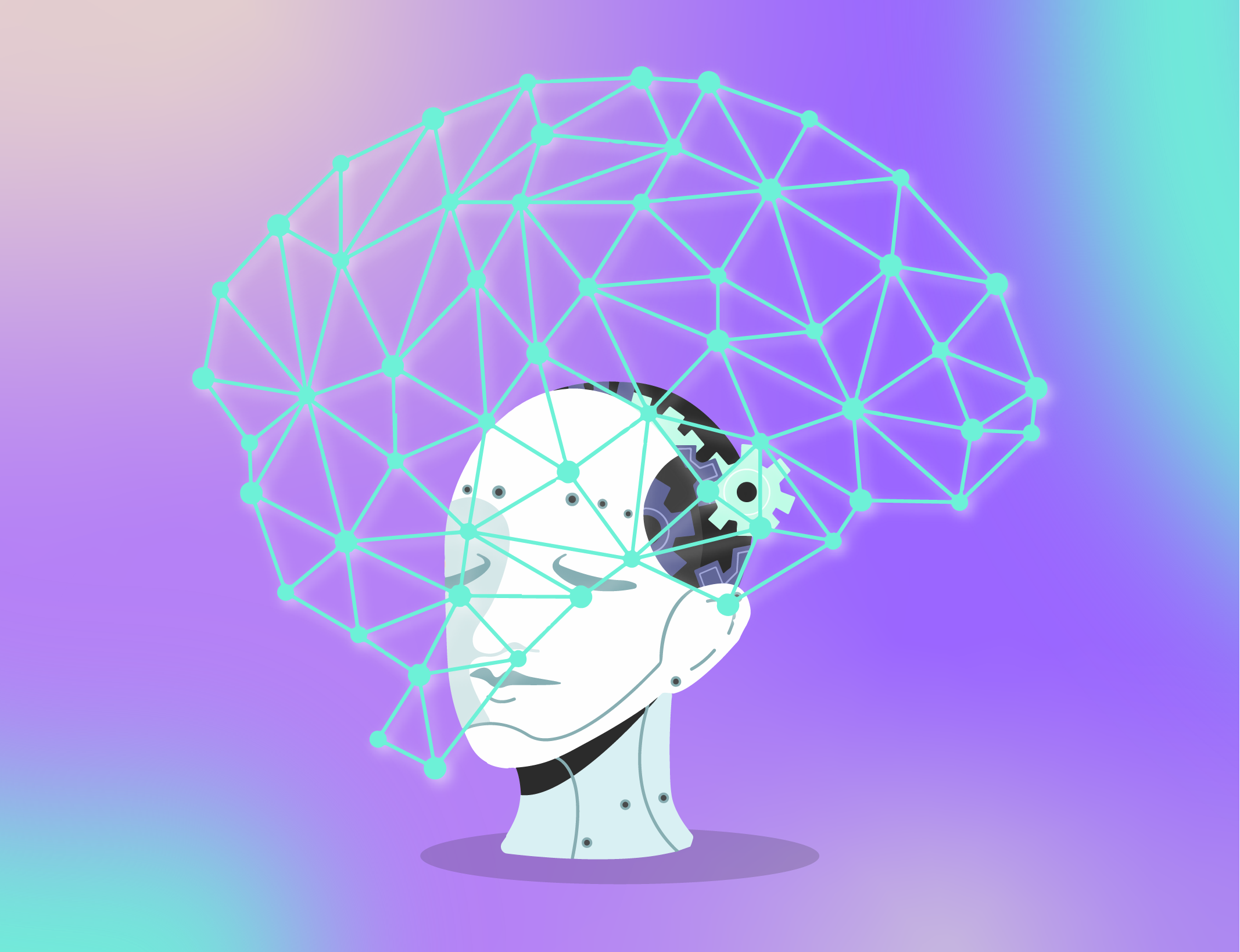Artificial intelligence and machine learning are familiar concepts for programmatic advertisers, who have been working with AI tools since long before ChatGPT burst into the public’s awareness.
AI algorithms enable the automation of tasks that previously required human intelligence, such as the buying and selling of ad inventory. With programmatic ad campaigns, advertisers can bid on ad space and optimize digital marketing campaigns in real-time — enhancing efficiency and maximizing return on ad spend (ROAS).
But now, there’s a new type of AI making waves in the digital advertising space — generative AI in the form of chatbots like ChatGPT and text-to-image models like Stable Diffusion. The Grapeseed Media team even developed our own chatbot: Grape Bot.
With their remarkable capacity to replicate human thinking, identify patterns, and perform predictive analytics, these AI platforms are fast becoming an indispensable component of modern business operations.
Leading global advertisers like Coca-Cola are already jumping on the AI bandwagon — and where the world’s biggest brand leads, the rest follow. So let’s take a look at the current state of AI in programmatic advertising and where it might be headed in the future.
Current Applications of AI in Programmatic Advertising
Human insights are and will always be crucial for designing, executing, and optimizing campaigns. However, in recent years, AI has taken away some of the manual work and started doing the heavy lifting with data. With the help of AI tools, advertisers achieve more efficient ad placements and targeting, as well as accurate and thorough data-driven analysis and campaign optimization.
For instance, machine learning algorithms run behind the scenes to optimize data across a number of dimensions, including:
- Ad format
- Ad environment
- Browser
- Device type
- Fold placement
- Geography
- Operating system
- Supply vendor
- Private contract
- Site/app
Optimizing for these dimensions maximizes efficiency, helps achieve campaign KPIs, and provides transparent reporting. The image below shows how AI is used to optimize CPM efficiency, which leads to cost savings for the advertiser:
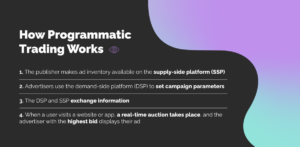
Additionally, programmatic advertising uses AI to create high-performance audience segments that align with your campaign goals so that ads are served to the users who are most likely to convert.
Programmatic algorithms will only segment a target audience if they determine that this will increase campaign performance. They can then measure the performance of each segment and remove any that don’t boost campaign performance.
Finally, AI-powered programmatic ads dynamically change digital ad creatives to display relevant content based on web page context, user signals, and intent.
The Future of AI Programmatic Advertising
As AI technology continues to advance, programmatic advertisers will be able to harness it in new and innovative ways. Here are seven AI trends we expect to see flourish in the programmatic advertising industry in the coming years.
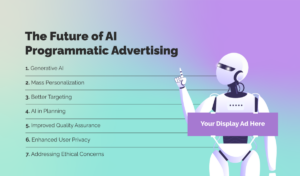
1. The Rise of Generative AI
Generative AI uses machine learning algorithms to generate new content, such as ad copy or creative assets. As this technology advances, advertisers will likely leverage it more to automate the process of ad creation and testing at the persona level, allowing marketers to develop and iterate on new ad concepts quickly and efficiently.
That said, generative AI also allows others to easily mimic ads, creating a brand safety issue. As such, there will likely be a growth in the need for original content because the quality of the output of generative AI depends on the quality of the input.
Therefore, learning advanced prompting techniques and how to use input data to get the best and most original results from generative AI will be a crucial skill for advertisers.
2. Mass Personalization
The rise of generative AI also means that brands will be able to tap into mass personalization, as it can help to automate the process — meaning businesses can create personalized content without having to write or design it manually.
Because generative AI draws on large amounts of data to create personalized content that is more likely to be relevant to each individual, it
can also help to improve the accuracy of personalization, which contributes to greater campaign effectiveness.
3. Better Targeting
AI and machine learning will play an even more pivotal role in shaping the future of programmatic advertising targeting than they already do. Currently, they are critical in audience targeting, enabling advertisers to reach specific segments and customize campaigns to achieve maximum engagement and conversion rates.
Through the analysis of demographics, browsing behavior, and interactions, machine learning algorithms continuously refine targeting strategies, leading to enhanced programmatic media buying. As the technology advances, machine learning will likely improve programmatic advertising targeting even further, making it more refined and efficient.
4. AI in Planning
Some ad agency executives are already using AI in the campaign planning phase. The use of AI in planning will likely continue to grow in the future as advertisers use it to align to outcomes that were previously out of reach (for example, because of the inability to parse through large quantities of data) or those that took longer to deliver.
5. Improved Quality Assurance
AI will likely help advertisers enhance their quality assurance processes. For example, some systems and platforms that advertisers use don’t have adequate controls, warnings, or triggers that signal when something could be wrong. AI is getting better at finding outliers, and this can be useful for discovering errors before they become serious problems.
6. Enhanced User Privacy
User privacy has become one of the top concerns in the adtech industry. New rules around personal identifiable information (PIIs) will have a significant impact on the industry, as they play a major role in identifying audiences for targeting and measurement.
In response, advertisers can use natural language processing to overcome this problem by identifying customer sentiment and journey to enable cohort or topic-based targeting.
7. Addressing Ethical Concerns
The rapid advances in AI technology are raising ethical concerns, and advertisers must ensure they handle user data, privacy compliance, and consent responsibly. New industry guidelines and regulations will be required to ensure ethical practices that balance personalization with user privacy.
Going forward, we’ll likely start seeing efforts to address algorithmic biases and ensure transparency in ad placement and automated processes to build consumer trust.
Programmatic Advertising and AI Go Hand-In-Hand
The partnership between AI and programmatic advertising holds enormous potential for the future. In the face of stricter privacy regulations, AI will be able to draw on vast amounts of data to deliver highly personalized ads while respecting user privacy.
Additionally, it will continue to improve and streamline every aspect of your digital marketing strategy, from strategizing and planning to optimization and analytics. It will help you spend your advertising dollars wisely and get even more out of your campaigns.
Have a chat with Grape Bot by clicking on the chat box on the bottom right of your screen.

